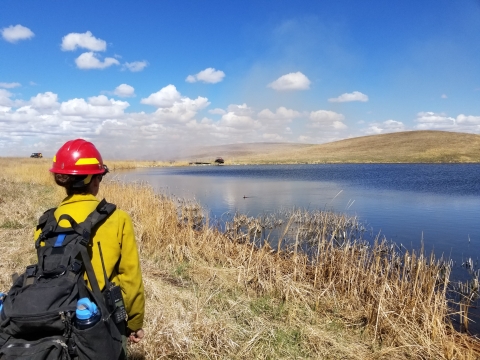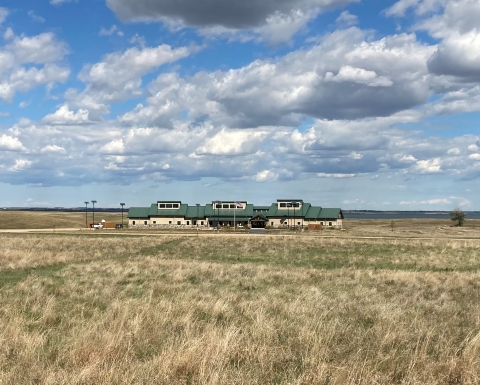McLean National Wildlife Refuge was established on June 12, 1939 through Executive Order 8157 by President Franklin D. Roosevelt “as a refuge and breeding ground for migratory birds and other wildlife”. The Refuge is not open to public use.
Location and Contact Information
About Us
The primary purpose of McLean National Wildlife Refuge is to provide suitable habitat nesting and brood rearing habitat for waterfowl, as well as other wildlife. To help plants and wildlife, Refuge staff use a variety of habitat management techniques to maintain, recover or enhance plant and wildlife values. Refuge staff carefully consider any management techniques and employs them in varying degrees according to the situation. Several habitat management tools are sued to maintain and enhance habitat, including grazing, prescribed burning, noxious weed control, mowing, seeding and the most important tool for refuge wetlands – water management. Sometimes, sensitive areas are closed to the public so that the land can recover more quickly.
The Refuge lies within the heart of the Prairie Pothole Region, which is named for its many small wetlands that resemble potholes. These wetlands and surrounding grasslands provide food, shelter, and nesting habitat for waterfowl and other birds. Known as the 'Duck Factory' of North America, the Prairie Pothole Region produces more than half of the continent's waterfowl. For hundreds of other species of migratory birds, it also provides the most productive breeding habitat on the continent. This unique Region includes portions of the Dakotas, Montana, Minnesota, Iowa, and Canada.
The Refuge is an important feeding and resting area for waterfowl migrating in the Central Flyway. The Refuge provides grassland habitat for upland wildlife of all sizes including sparrows, sharp-tailed grouse, fox, coyote and white-tailed deer; wetland habitat for shorebirds, gulls, terns, rails, and cranes; and island habitat for nesting ducks and Canada geese.
What We Do
Refuge staff use a host of scientifically sound management tools to address biological challenges. These tools help ensure a balanced conservation approach that benefits both wildlife and people. At this field station, our conservation toolbox includes:
- Planning – Comprehensive Conservation Plan
- Compatibility Determinations
- Cultural Resources
- Fire Management
- Grazing
- Invasive Species
- Inventory and Monitoring
- Law Enforcement
- Pesticide Management
- Species Research
- Water Management
Our Organization
The U.S. Fish and Wildlife Service manages an unparalleled network of public lands and waters called the National Wildlife Refuge System. With over 565 refuges and 38 wetland management districts spanning the country, this system protects iconic species and provides some of the best wildlife viewing opportunities on Earth.
Our Species
Large concentrations of waterfowl - Canada geese and mallards make up the bulk of the numbers, with an occasional flock of white-fronted geese mixed in. They use the Refuge as a staging area during the spring and fall migration periods. A nesting island provides habitat for many species of ducks to nest - mallard, blue-winged teal, northern shoveler, northern pintail, gadwall, redhead, lesser scaup, and more. Marbled godwit and Wilson's phalarope nests have also been observed on the island.
Grasslands provide nesting areas for many species of birds - western meadowlarks, upland sandpipers, bobolinks, grasshopper and savannah sparrows, several species of ducks, ring-necked pheasant, and more. White-tailed deer find shelter in the dense vegetation that surrounds the wetlands.






